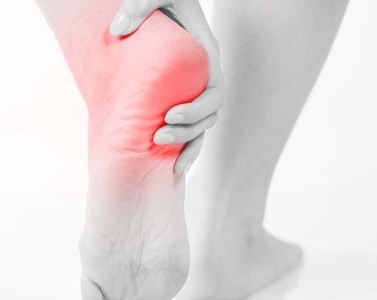Plantar fasciitis is the prime reason behind most heel pains. It is caused due to the inflammation of a thick band of tissues which lies at the bottom of the foot and is responsible for connecting the toes with the heel bone. Stabbing pain occurs in plantar fasciitis which generally occurs during the first step in the morning. Although, the stabbing pain normally decreases when the movement of the legs increases. However, the pain might return after rising from a long time of sitting or after a long time of standing. This pain can be seen mostly in runners, overweight or obsessed people and in those who wear shoes without adequate heel support.

The most common symptoms of plantar fasciitis is the stabbing pain in the bottom of the foot, which can be felt after a long time of standing or sitting or putting the first step after rising up from sleep. The pain usually gets worse after long hours of exercise but not during it.
The plantar fascia, which is the bunch of tissues, acts like a shock absorber and supports the arching moving of the foot. Tears in the plantar fascia results to plantar fasciitis which is caused due to excessive tension and Stress on the fascia. Continuous tearing and stretching of the fascia can cause it to become inflamed and therefore resulting in excessive pain in the heel area.
There are certain factors which can increase the risk of developing plantar fasciitis. They are:
Treatments like bracing of the foot, cortisone injections and strapping are the most common types of treatments which are used to cure plantar fasciitis. But, the best way to properly deal with it and provide long-lasting effects and improvements is through biologic regenerative treatments like PRP or Platelet Rich Plasma treatment. PRP is widely used now to cure plantar fasciitis as it stimulates the natural ability of the body to repair the damaged tissues and provides long lasting and faster improvements. Dr Vineeth MB, Ortho Consultant in Ernakualm provides Plantar Fasciitis PRP Treatment in Kochi. Best Biological Heel Pain PRP Therapy in Kerala, India